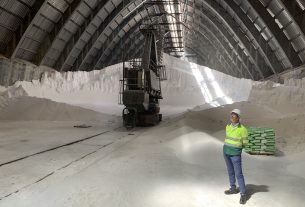United States – Researchers at Stanford University have come up with a fresh approach to the problem of ensuring that carbon dioxide (CO2) injected underground stays where it is supposed to.
At the levels of planet-warming gases currently present in Earth’s atmosphere, climate models have long predicted that extreme heat waves of the kind experienced by millions of people this summer would become much more frequent. There is growing scientific agreement that nations will need to actively remove and manage CO2 for the world to avoid warming beyond the threshold of 1.5 degrees Celsius above pre-industrial levels as emissions and temperatures continue to rise.
Injecting CO2 into underground rock formations has been studied as a potential long-term method of keeping removed carbon out of the atmosphere. But there are still issues that need to be resolved.
In an effort to foretell how injections of CO2 or other fluids will affect a specific rock formation, earth scientists have for years simulating fluid flow, reactions, and rock mechanics.
The interaction and full effects of geochemical reactions, which frequently tighten seals by effectively blocking pathways with dissolved minerals, are not reliably predicted by existing models. Geochemical reactions can also result in cracks and wormholes that could allow buried carbon dioxide to affect drinking water quality or escape to the atmosphere, where it would contribute to climate change.
The wide range of time and spatial scales over which interacting processes take place simultaneously underground present one of the main modeling challenges. While some reactions last only a fraction of a second, others last for weeks or even years. As reactions develop, changes in the geometry and chemistry of the rock surface, as well as the changing composition and concentration of different minerals in any given patch of rock, have an impact on the fluid chemistry, which in turn affects fractures and potential leakage pathways.
Lab on a chip
The new approach makes use of a microfluidics tool, also known as a “lab on a chip” by scientists. Because the technology involves incorporating a tiny fragment of shale rock into a microfluidic cell, the researchers refer to it as “rock on a chip” in this case.
Eight rock samples from the Wolfcamp shale in Texas and the Marcellus shale in West Virginia were used by the researchers to demonstrate their device. Smaller than a few sand grains in size and with varying concentrations and arrangements of reactive carbonate minerals, the rock slivers were cut and polished. The samples were put into a polymer chamber that was enclosed in glass and had two tiny inlets open for the injection of acid solutions. They were able to observe, in minute detail, how chemical reactions caused specific mineral grains in the samples to dissolve and rearrange using high-speed cameras and microscopes.
Given the importance of carbon removal in government plans to combat climate change and the hundreds of millions of dollars that are currently flowing into the developing technology from private investors, improving reactive transport models is a matter of growing urgency. Only pilot-scale projects are currently taking CO2 directly out of the atmosphere. More than 100 projects are currently under development worldwide to capture emissions at the source, and the United States government is getting ready to spend $8.2 billion through the bipartisan infrastructure bill on carbon capture and storage from industrial facilities. These technologies are more frequently used.
Plans for storing carbon do not always call for burying it underground. The new Stanford technology, however, might help those that do involve geological storage and even make them more stable and secure. In the future, the team intends to use the same platform to research geochemical reactions brought on by the injection of hydrogen, which is a key component of U.S. and EU plans to reduce emissions by 50 percent by the year 2050, as well as waste water from oil production, desalination plants, or industry. Even though testing underground hydrogen storage at even a pilot scale will require better screening tools and a better understanding of biogeochemical reactions, it is frequently mentioned as a promising solution to the difficult and ongoing problem of ensuring safe storage of the highly flammable gas at a large scale.




